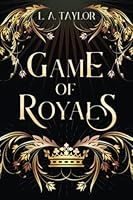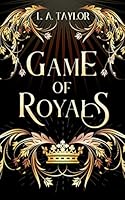Description
A tale of treachery, betrayal, and conspiracy (imagine "The Tudors" meets "The X-Files"). Lilz Chantwell was raised in the nobility, but with her father banished and her mother dead, she has to hire herself out as a servantā"and a servant to the Hasten family, no less, which is as ruthless as they come. With no one to rescue her, Lilz will have to use all of her wits to survive and succeed despite the Hastens, who have a tendency to poison anyone who opposes them. Not the least is Sir Jen Makeready, who is deadā"and he's not the only one. In fact, anyone who challenges Fenne, the spoiled-rotten granddaughter of Nevan Hasten, Dych of Summerlea, seems to end up poisoned. In the middle of all this intrigue is Lilz, bond-servant to the Hasten family and to Fenne. Lilz gradually comes to realize there's a conspiracy behind all thisā"a secret kept by the royal family and their confidants for many years. If that wasn't bad enough, she and everyone else has to evade the king's spies: human, animal, and mechanical. Lilz finds herself always living on the edge, always feeling she's being watched, knowing that one wrong step could lead to her death or imprisonment. She manages to survive for years by her wits and by making friends with anyone who can help her. But will that be enough to escape the plots of the Hasten family, who have a grip on power and intend to keep it by any means necessary? Especially when she starts to uncover the conspiracy and the secrets kept by Makeready, the Hastens, and the royal family? An odd mixture of alternate worlds and cultural experimentation, told entirely from the viewpoint of the medieval world being experimented upon, [this novel] is the late L. A. Taylor's longest and best novel. Both the heroine and her world are fully and vividly realized, not to mention interesting, even fascinating at times. For those who enjoyed Cat's Paw, her offbeat, hard-to-classify novel about magic that isn't really magic, [this novel] is a āmust read.ā ā"Gene DeWeese, Midwest Book Review [This novel] is intricately structured: chapters 1-13 are split-level, one part telling ācurrentā events, as the indentured servant Lilz brings her selfish mistress Fenne news of a death that makes it possible for Fenne to divorce her first husband and re-marry, and the other part telling the events that led up to the death. When past catches up with present, the narrative continues with a not-dunnit murder mystery, a double riddle of getting Fenne acquitted of murder without letting her save herself by accusing Lilz. (It will be obvious to the reader that Lilz is not guilty. The actual question of who-dunnit is interesting, but the narrative concentrates on the less usual question of how to win acquittal.) The murder and the society are based on a model from a period rarely used in either fantasy or sf: the Overbury Murder Case from the reign of James I, in the early 17th century. Lilz's Kinland is similar to James's England, but much changed from our world by magic powers (or what they take to be magic powers) inherited by the kings. The novel is fascinating on all these levelsā"as a murder mystery, as historical, and as f/sf alternate-world. ā"Ruth Berman, Mythprint



 Amazon UK
Amazon UK